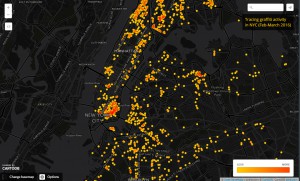1. After taking this course, research seems much more tangible and much more enticing. I feel much more confident in finding sources, annotating them and utilizing them for a subject of interest. I was also satisfied with the numerous fields we have taken, some of which I never knew existed (the NYCHA archives at LaGuardia CC).
2. As a design student, the idea of a geographic viewpoint has always been relevant. The specificity of geographic viewpoint, site, or location is a great enabler for students, as it may inspire them to further investigate why conditions were the way they were, why conditions have changed as well as the possible projection or invention of what could be made next. However, from a interdisciplinary standpoint, it is imperative to recognize the different methodologies used to extrapolate information.
3. I will most certainly use or seek out more primary sources in the future, as they are incredibly relevant to architecture, urban design and planning. Primary sources are often a critical ingredient for proper research, analysis and sometimes design proposals.
4. Research can be more engaging if the subject of interest is discovered earlier, and if the tools used to facilitate the research are well understood by students and are further demonstrated (i.e sketchup)




